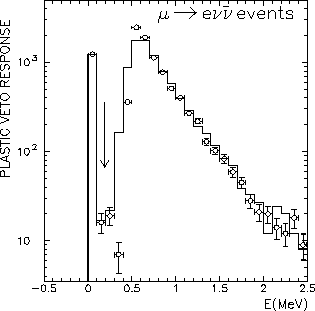
Figure: The Plastic Veto detector: it contains 20 modules each of which is read longitudinally at both ends. With a thickness of 3.175 mm, it ensures an efficient identification of charged particles.




The outer MWPC is surrounded by a thin plastic veto detector (PV). The PV allows an efficient identification of charged particle induced events with good timing resolution.

Figure: The Plastic Veto detector: it contains 20 modules
each of which is read longitudinally at both ends. With a thickness of 3.175 mm, it
ensures an efficient identification of charged particles.
The PV has a cylindrical geometry with outer radius of  , a
thickness of
, a
thickness of  and active length of
and active length of  .
It contains 20 modules with interleaved edges as displayed in
figure
.
It contains 20 modules with interleaved edges as displayed in
figure  and its
segmentation is consistent with the geometry of the calorimeter and dictated
by the stopping rate. Each of its modules is coupled via a light guide at both
ends to a photomultiplier tube.
and its
segmentation is consistent with the geometry of the calorimeter and dictated
by the stopping rate. Each of its modules is coupled via a light guide at both
ends to a photomultiplier tube.

Figure: Simulation of the
response of the Plastic Veto detector to Michel events thrown according
to the stopping distribution and originating in the target. The arrow indicates
the Minimum Ionizing Particle threshold. The energy deposited is superimposed on
the histogram of the light output. Even after accounting for photoelectron statistics
and light collection nonuniformity, there is a clear separation between charged
and neutral particles as indicated by the arrow.
The PV is designed such that it provides a good
separation of minimum ionizing particles, i.e. a separation of neutral and
charged tracks as shown in figure  . Therefore, for the pion beta
processes, the PV allows the rejection of charged particle induced events in
the calorimeter while it vetoes out the neutrals for the
. Therefore, for the pion beta
processes, the PV allows the rejection of charged particle induced events in
the calorimeter while it vetoes out the neutrals for the
 processes.
processes.